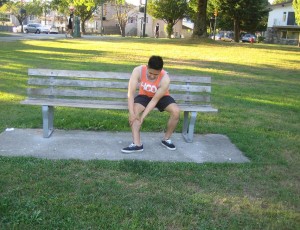Osteophytes or bone spurs are described as bony protrusions that develop along bone perimeters. The bone spurs that develop on the heel typically form in the spot where the heel bone meets with the connective tissue. Even though the small bone spurs on the heel does not trigger any symptoms, the pain and mobility loss eventually increases over time.
Anti-inflammatory medications
You can utilize an over-the-counter non-steroidal anti-inflammatory drug (NSAID) such as ibuprofen. The affected foot must be elevated since it also provides a beneficial effect.
Cold therapy
You can apply an ice pack on the affected heel for 20 minutes for every few minutes. The ice pack can reduce the inflammation and momentarily reduce the pain.

Avoid applying the ice pack directly against the skin on the foot since it can cause damage to the skin. Just make sure that you will place a thin towel in between the pack and the heel.
Orthotics or heel cups
Heel cups or other types of orthotics can be used to relieve the pressure from the sore heel. The orthotic inserts are readily available over-the-counter or by prescription. The custom-fitted or prescription orthotics are generally effective than the over-the-counter inserts in minimizing the pain as well as preventing additional problems.
Adequate rest
The affected heel must be allowed to rest as much as possible to minimize the inflammation and then limit engaging in any physical activity once the pain subsides. In case rest could not help alleviate the symptoms, at least momentarily, a doctor should be consulted.
Testing for bone spurs
A doctor should be consulted so that testing can be carried out such as X-rays and other imaging tests to check if the bone spurs need medical treatment. The commonly used treatment options include whirlpool baths, physical therapy, diathermy or ultrasound. These are considered effective treatments in some cases of bone spurs in the heel especially those that are linked with inflammation in the foot.
Surgical intervention
Surgery might be considered in some cases to remove the bone spurs in the heel. The type of surgery required usually depends on the location as well as the severity of the bone spurs, but most procedures are carried out on an outpatient basis.
Always bear in mind that spurs often develop along with plantar fasciitis which is an inflammatory issue that triggers pain or discomfort in the heel region of the foot.
